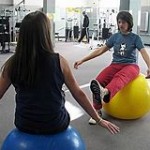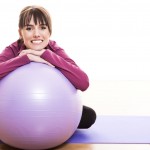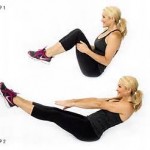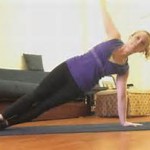Ball Balance for a Strong Core
Sit on a stability ball with both feet together. (Be sure your ball is the proper size. When sitting your hips should be level with or 1-2 inches above your knees.) Once this skill is mastered safely, add a balance challenge to strengthen your core. To perform the exercise, lift your right foot up off the floor. If you’re stable, extend your right knee. Keep your torso upright and straight, and pull your belly button into your spine. Hold for 10 seconds, and then return your right foot to the floor. Next, lift your left foot up off the floor, extend your left knee. Hold for 10 seconds.
*Consult your physician before performing exercise.
 Subscribe
Subscribe





